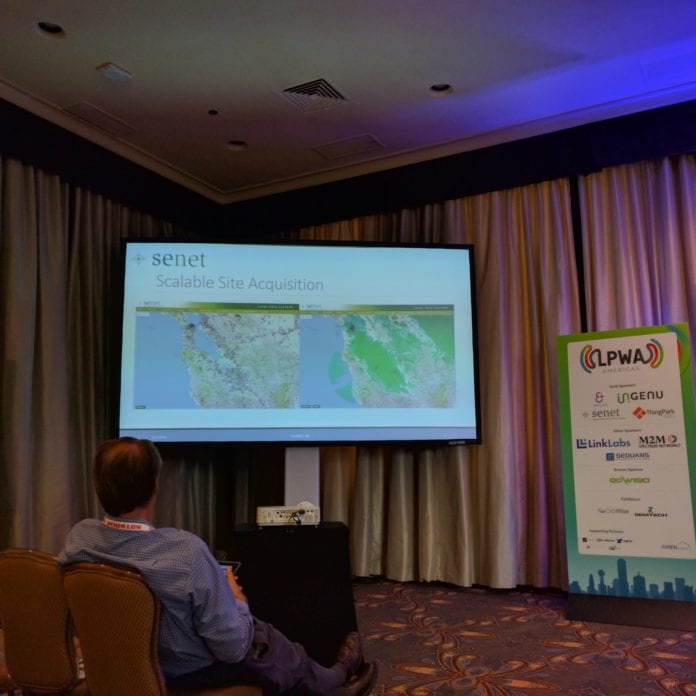LPWA: low cost, fast expansion
DALLAS – Dave Kjendal, CTO and VP of engineering at low-power wide-area network provider Senet, gave a talk titled “Enabling rapid IoT network deployment to capture market share” at this year’s LPWA Americas conference.
Low cost is the single most important requirement for LPWAN providers, according to Kjendal. Inexpensive network hardware – like gateways – range from macro cells to pico cells with costs from several thousands of dollars to under $100. The low cost achieved by end devices needs to be matched by a low cost of network deployment with simple installation. LPWA is said to costs orders of magnitude less than normal radio access network deployments, which attributes to its expansion of coverage area and the continuing emphasis on the “internet of things.”

Kjendal emphasized the importance of making determinations on the kind of coverage needed in any given area. Once a provider has done so, it will need tools and processes to select among assets to decide where to deploy its network. Providers will need certain resources for smartly deploying an LPWAN:
-
–Insource team that can do end-to-end acquisition.
–Negotiate leases, general contracting, specifically for time to market so you can deliver as fast as possible.
–Team that can deal with nontraditional sites and assets. (Traditional is negotiation with tower of radio head, unstructured would be a hotel that can build out a network more rapidly with its own solution.)
–Augment third-party relationships to very rapidly scale and deploy network.
–Can bring network coverage within 60 to 90 days, which lets IoT users deploy their applications in those areas.
–Need relationships with tower infrastructure owners and contractors.
Cover as much area as possible
Kjendal said a fact of life is LPWA providers will need to build out a network and see what happens underneath it. This brings relevance to the market and allows customers to experience the network without having to wait for it to come.
There are two other techniques for rolling out a low-power wide-area network, according to Kjendal:
Collaborative regional deployments
–Application specific coverage.
–New geographies, yields additional or new areas of coverage.
–Enhance existing deployments.
Semi-private and ad-hoc deployments
–Application sponsored deployments.
–Consumer markets.
–Campus and smart building solutions.
Kjendal noted consumer markets will be unaddressed unless LPWA providers have the broadest coverage, so they can either try to cover the whole country, or find a solution provider and ways to bring coverage wherever it is required.
“Smart cities take a long time,” Kjendal said. “We see smart cities being built from the inside out as apps come on and determine they have a requirement that will organically build the smart cities, this application allows us to build that with them.”
Read our coverage on LPWA network rollouts here.

